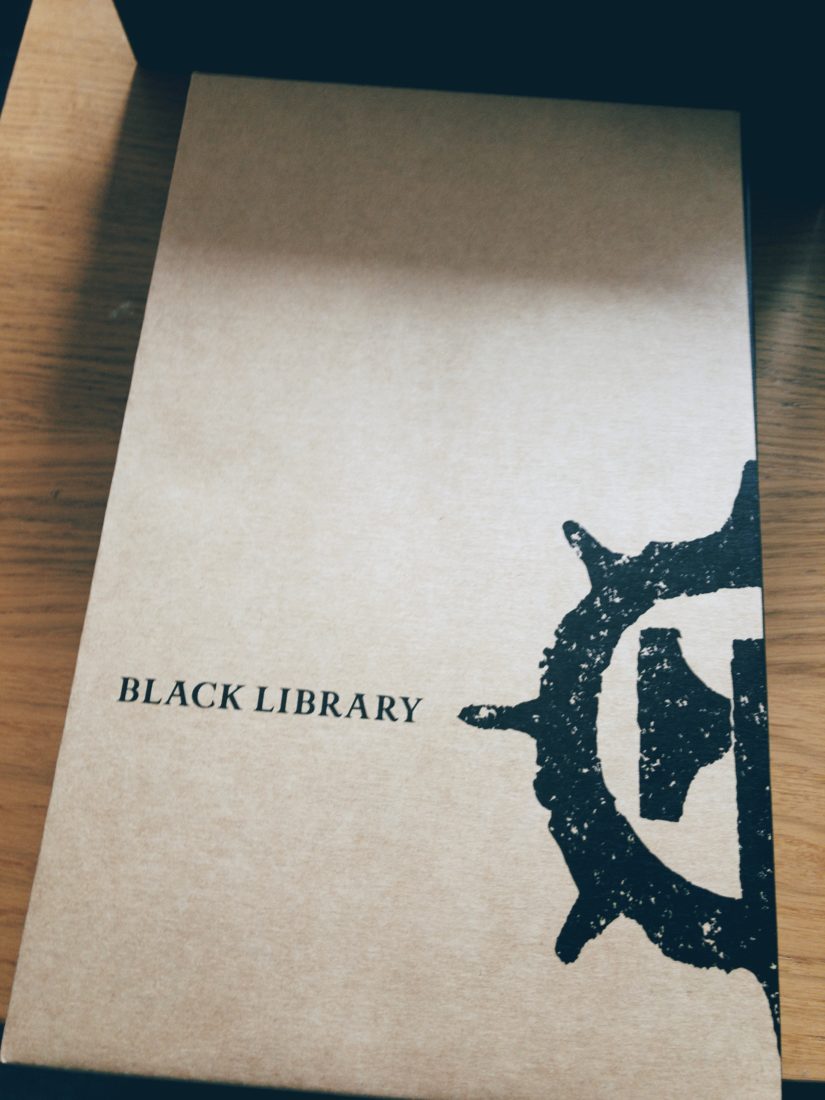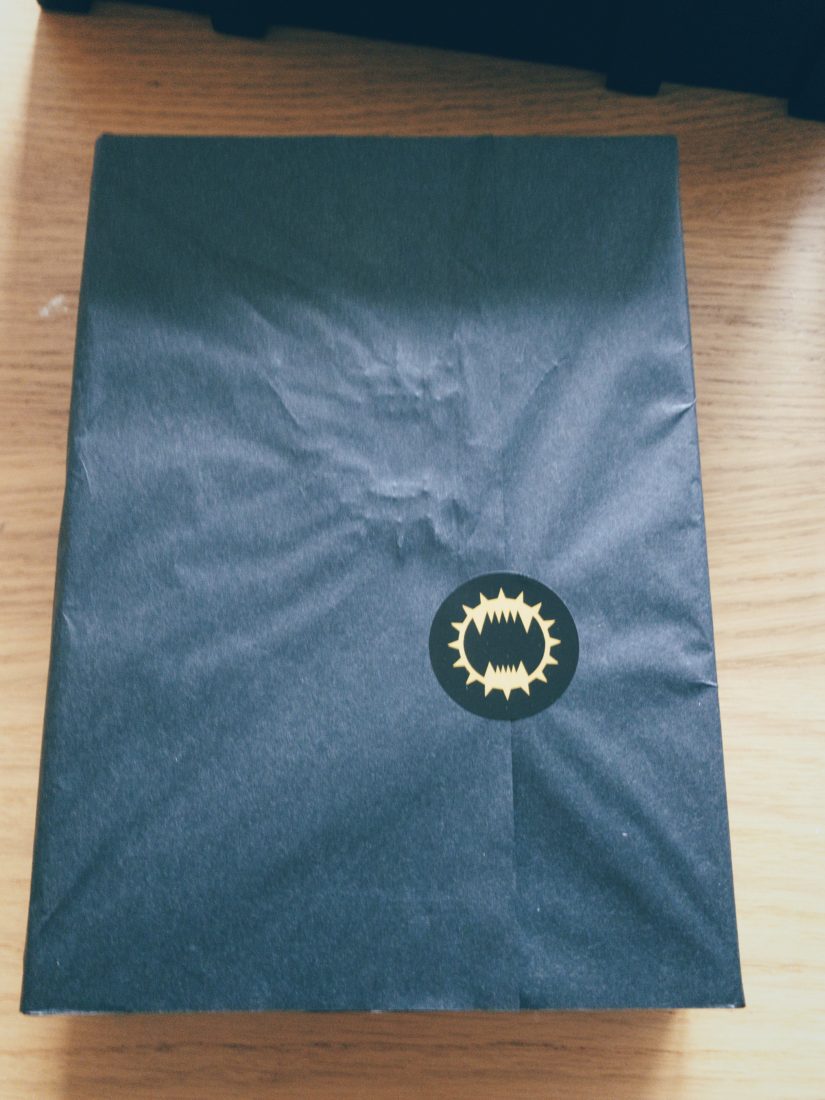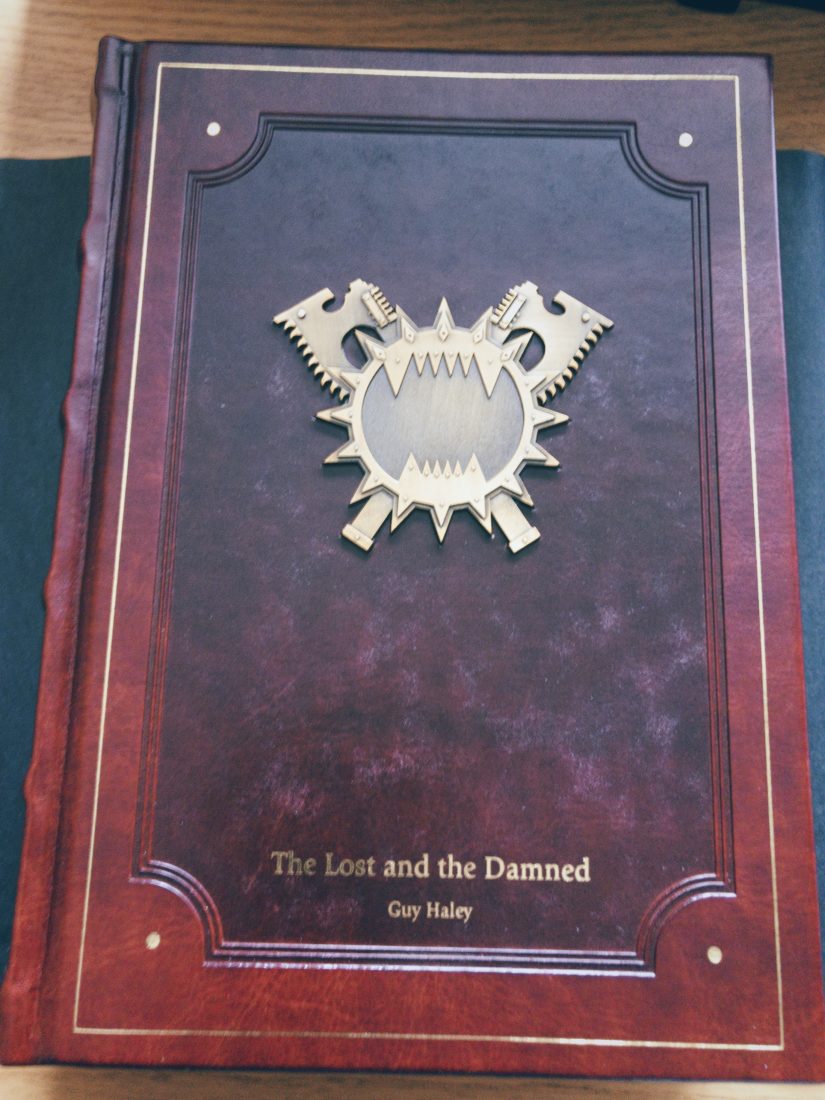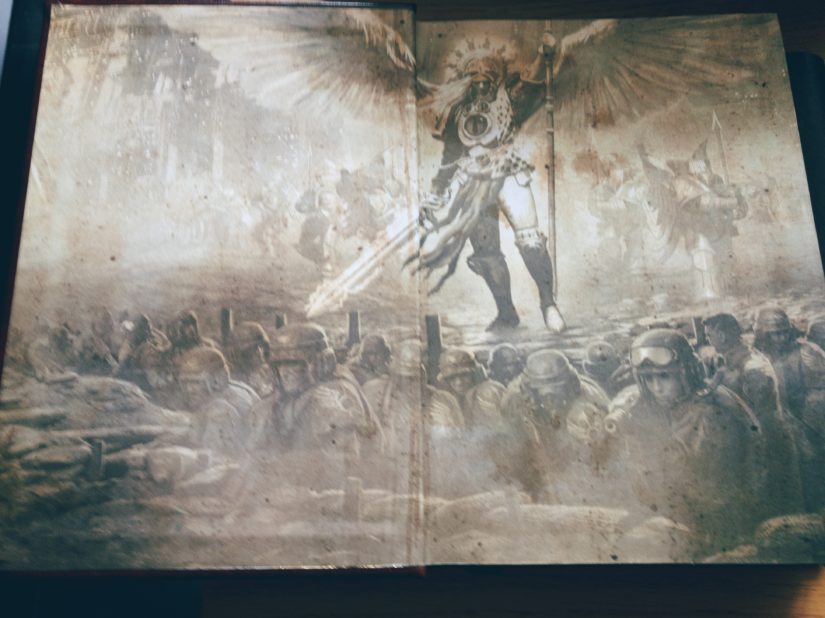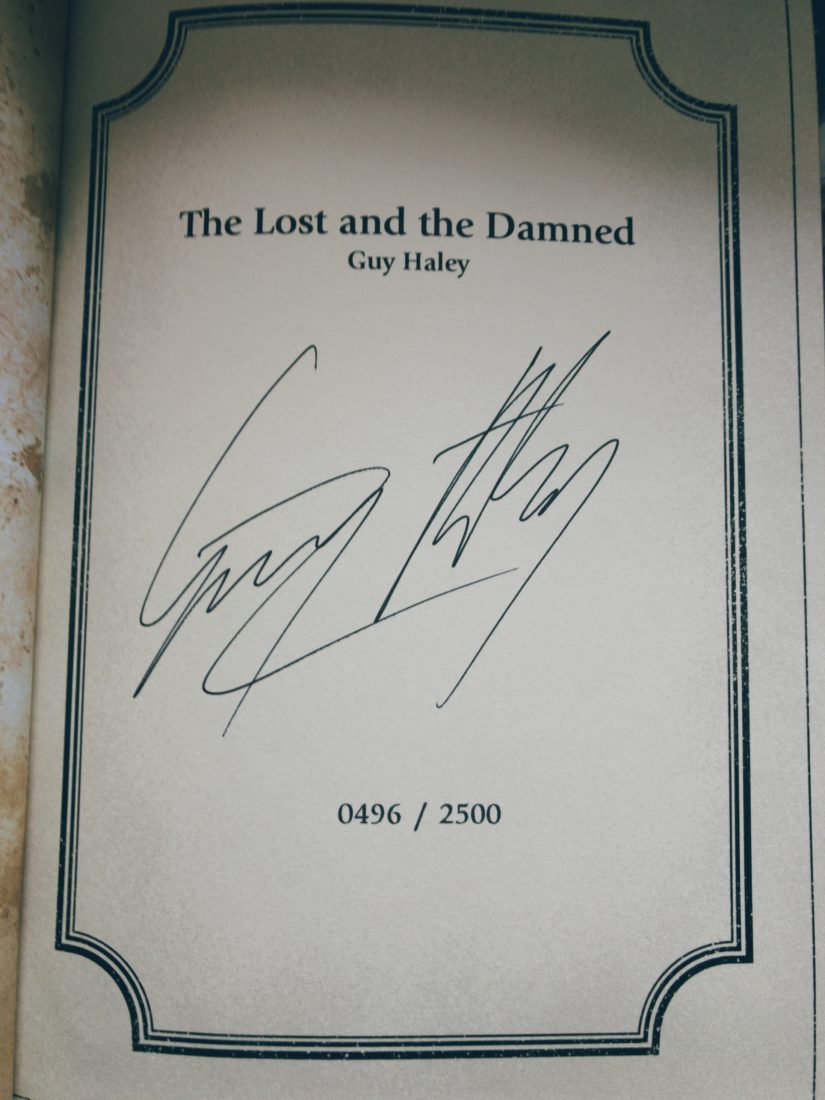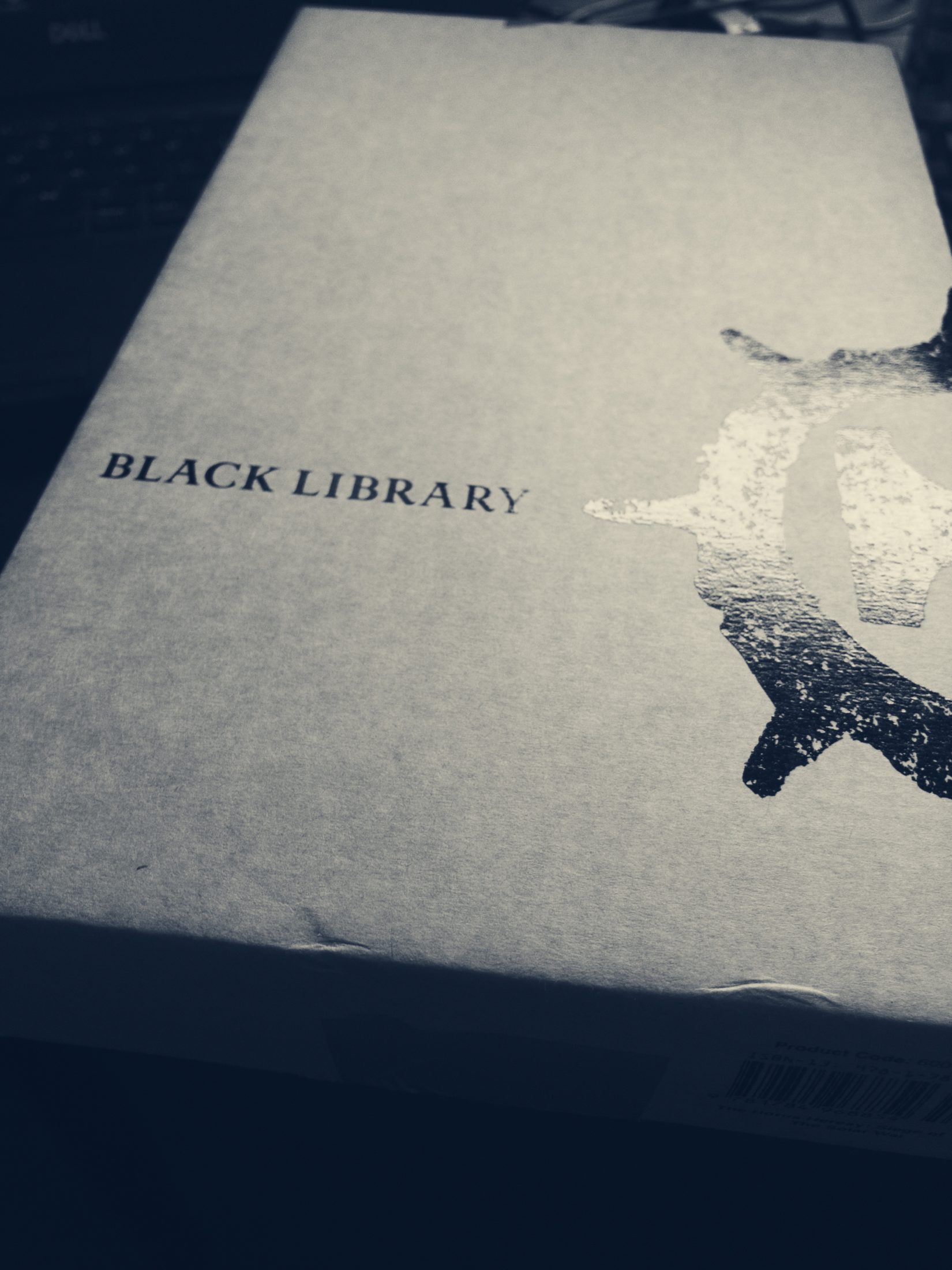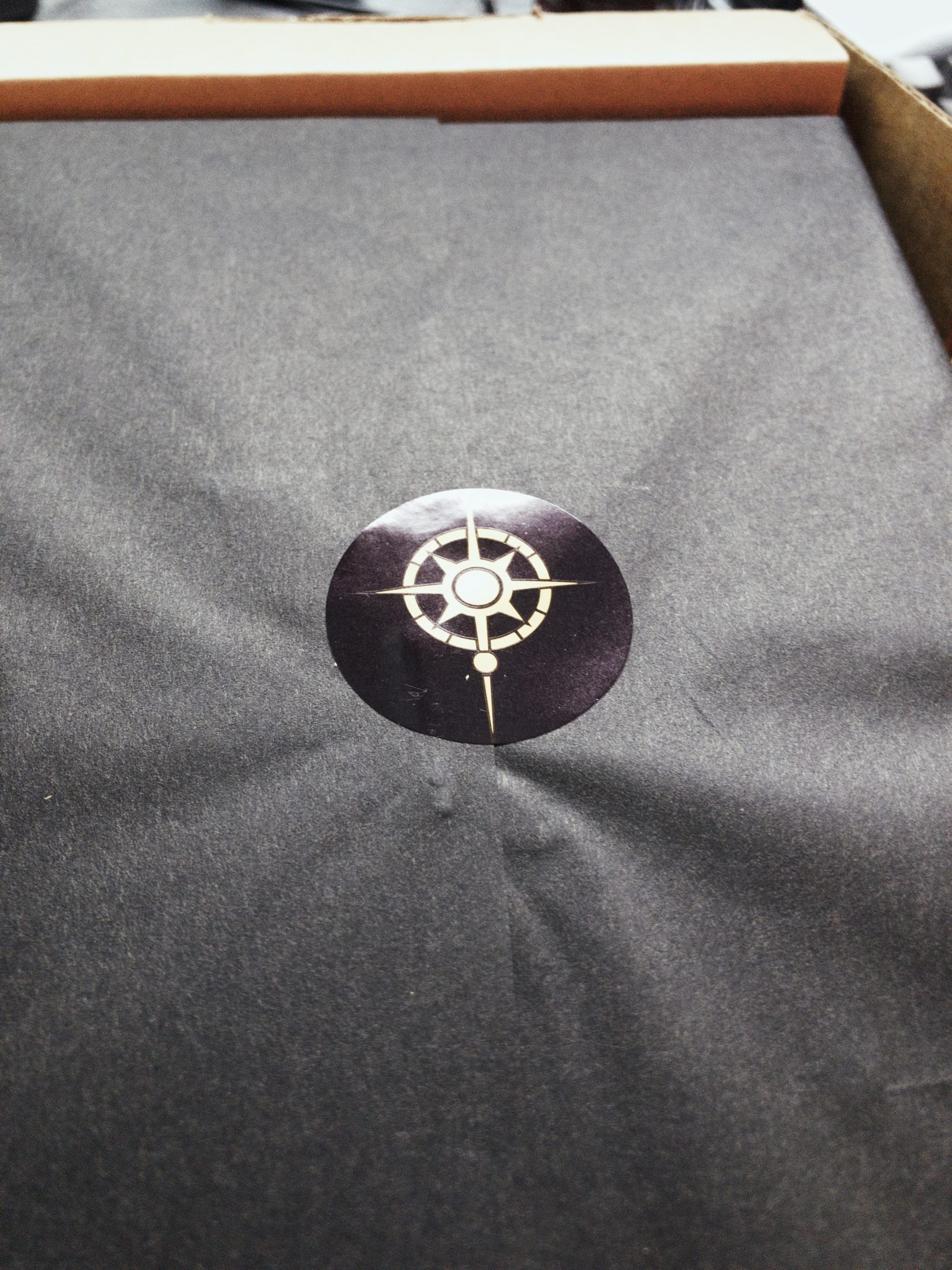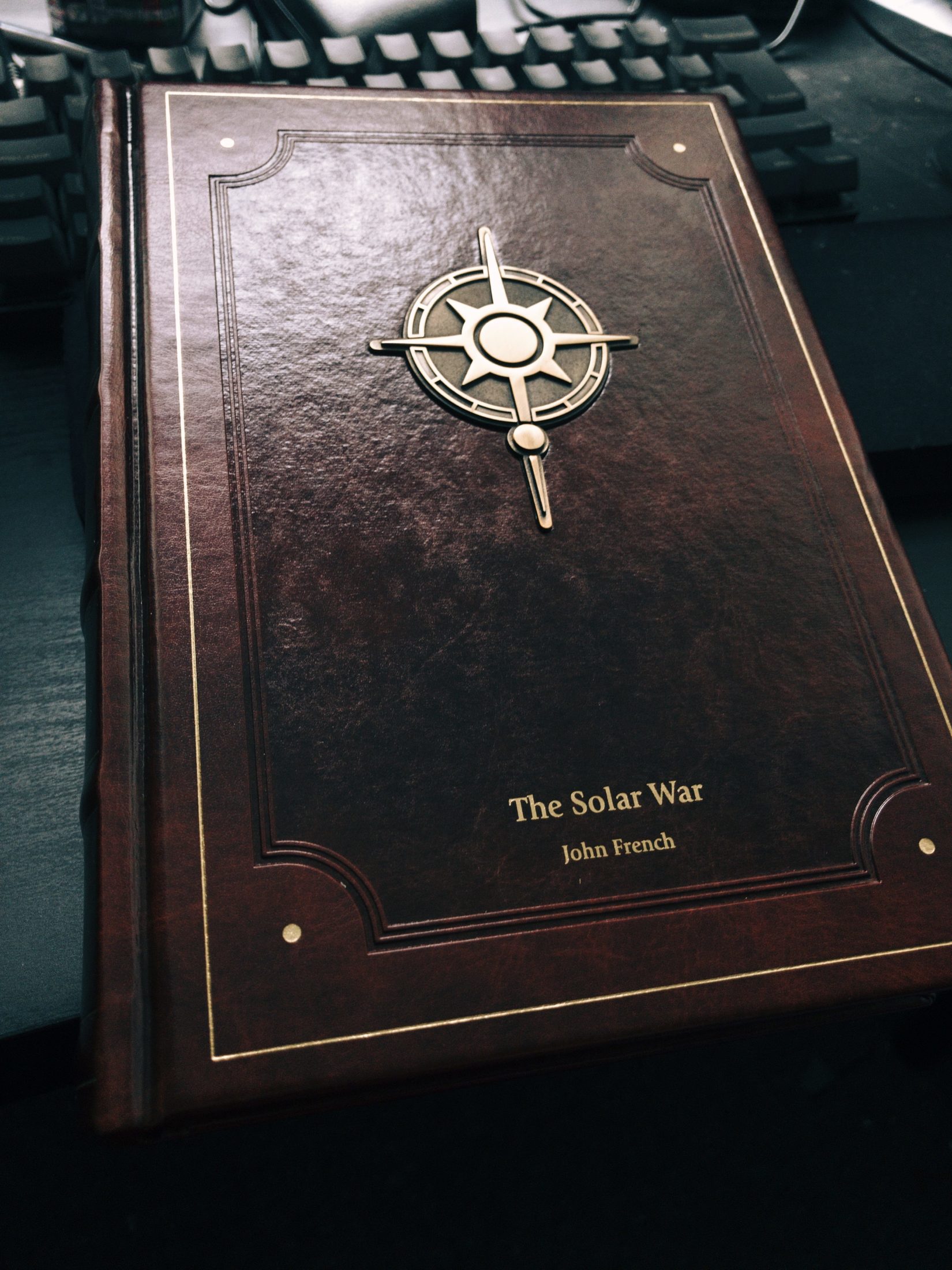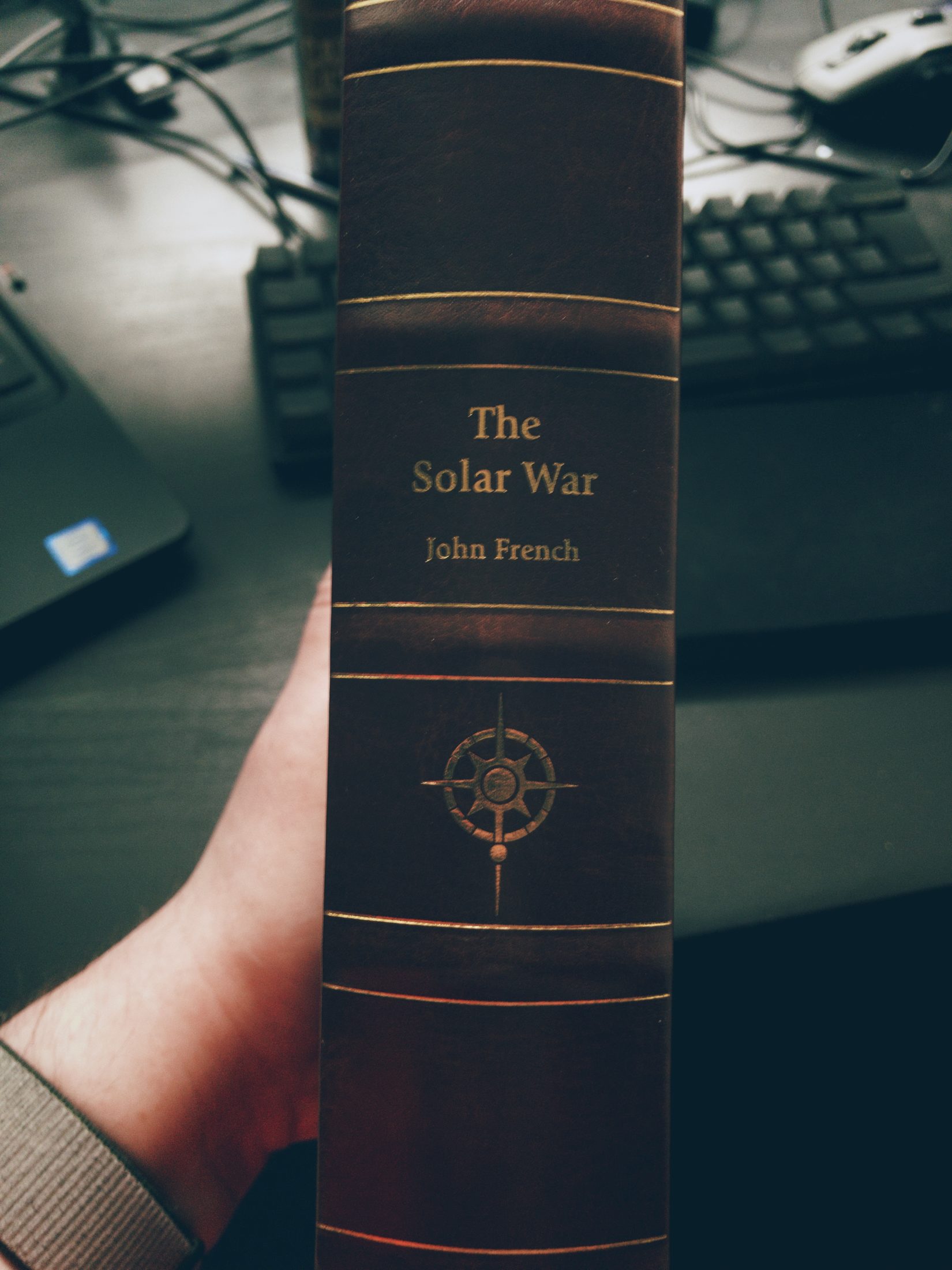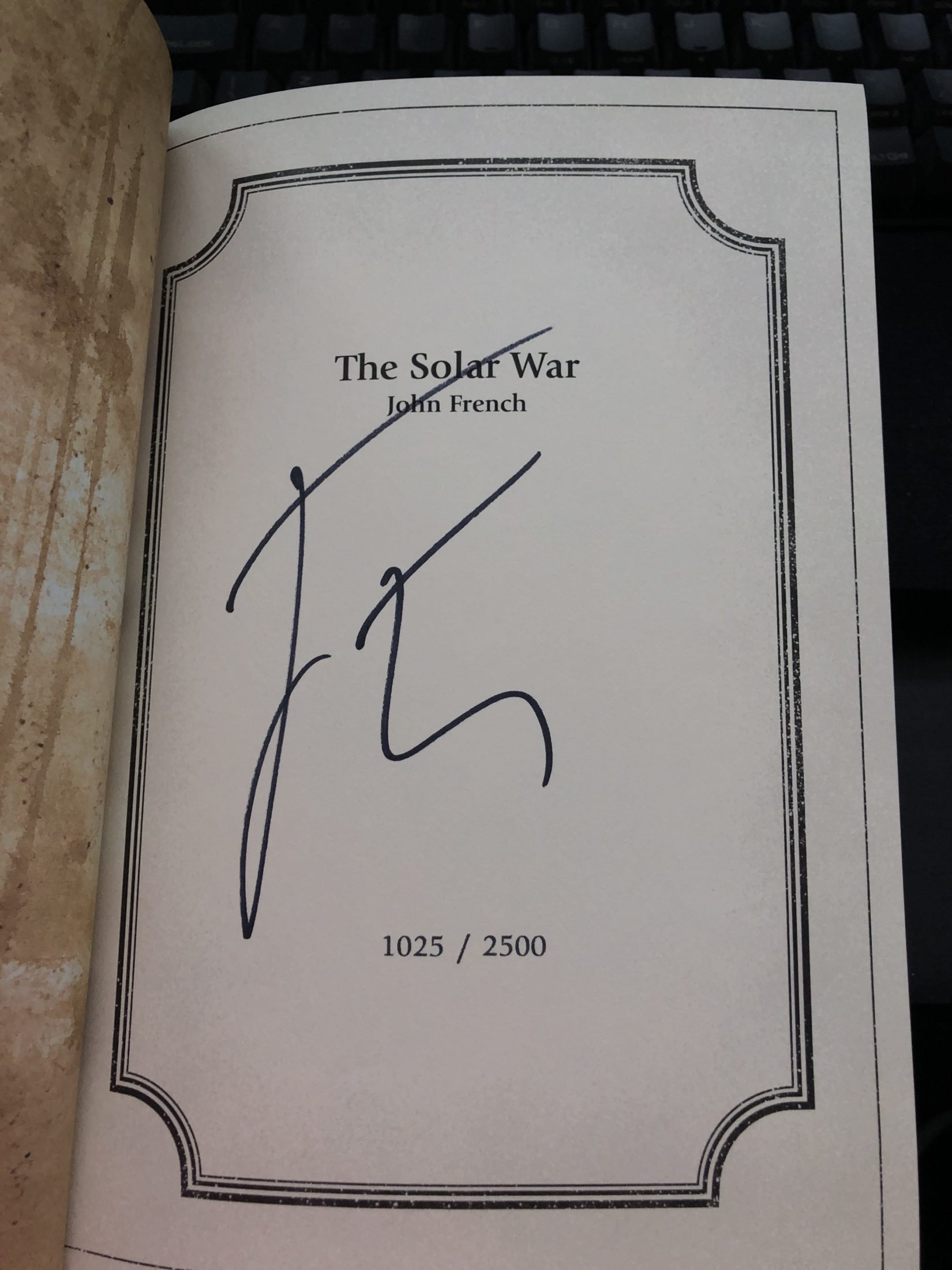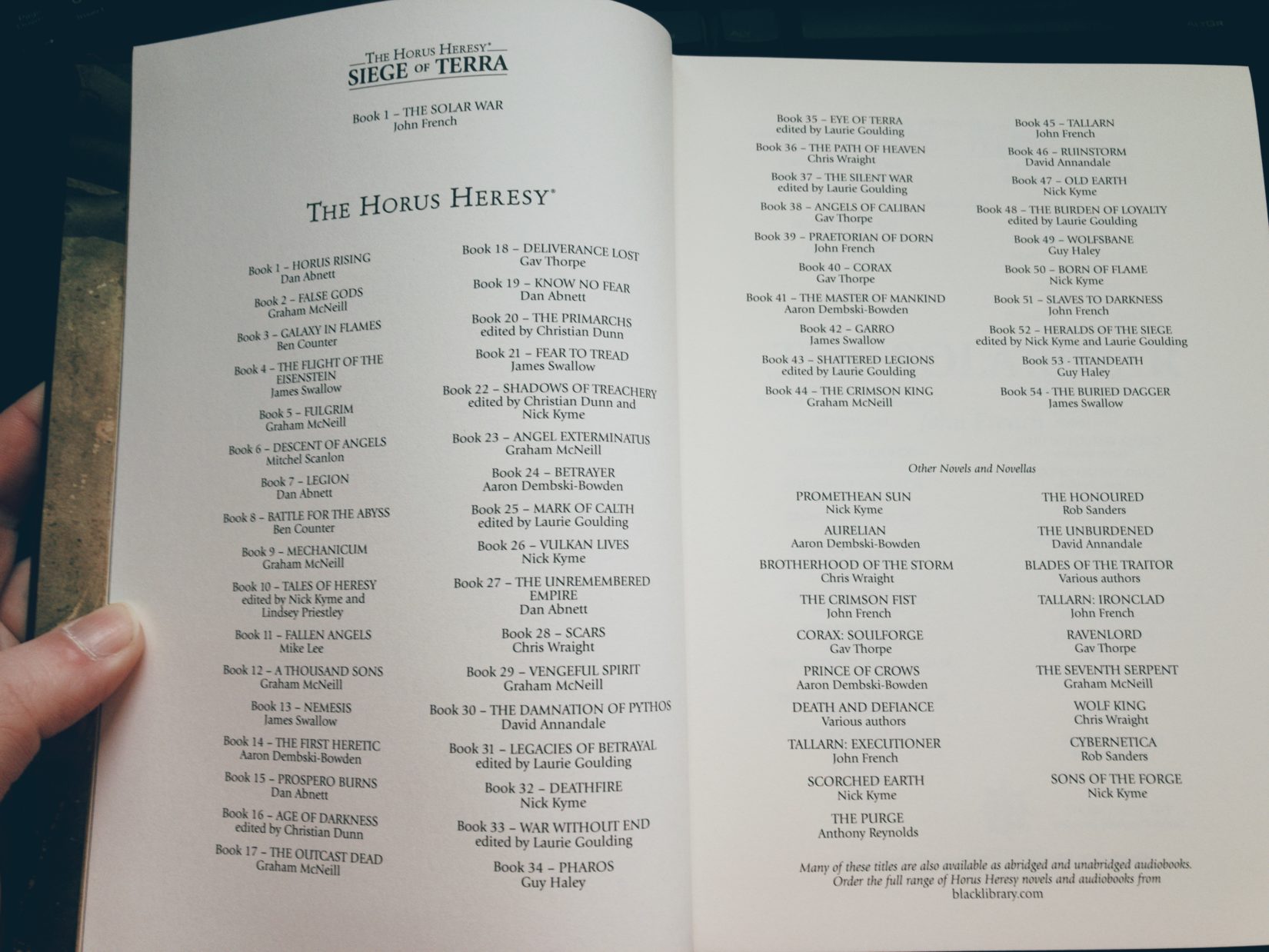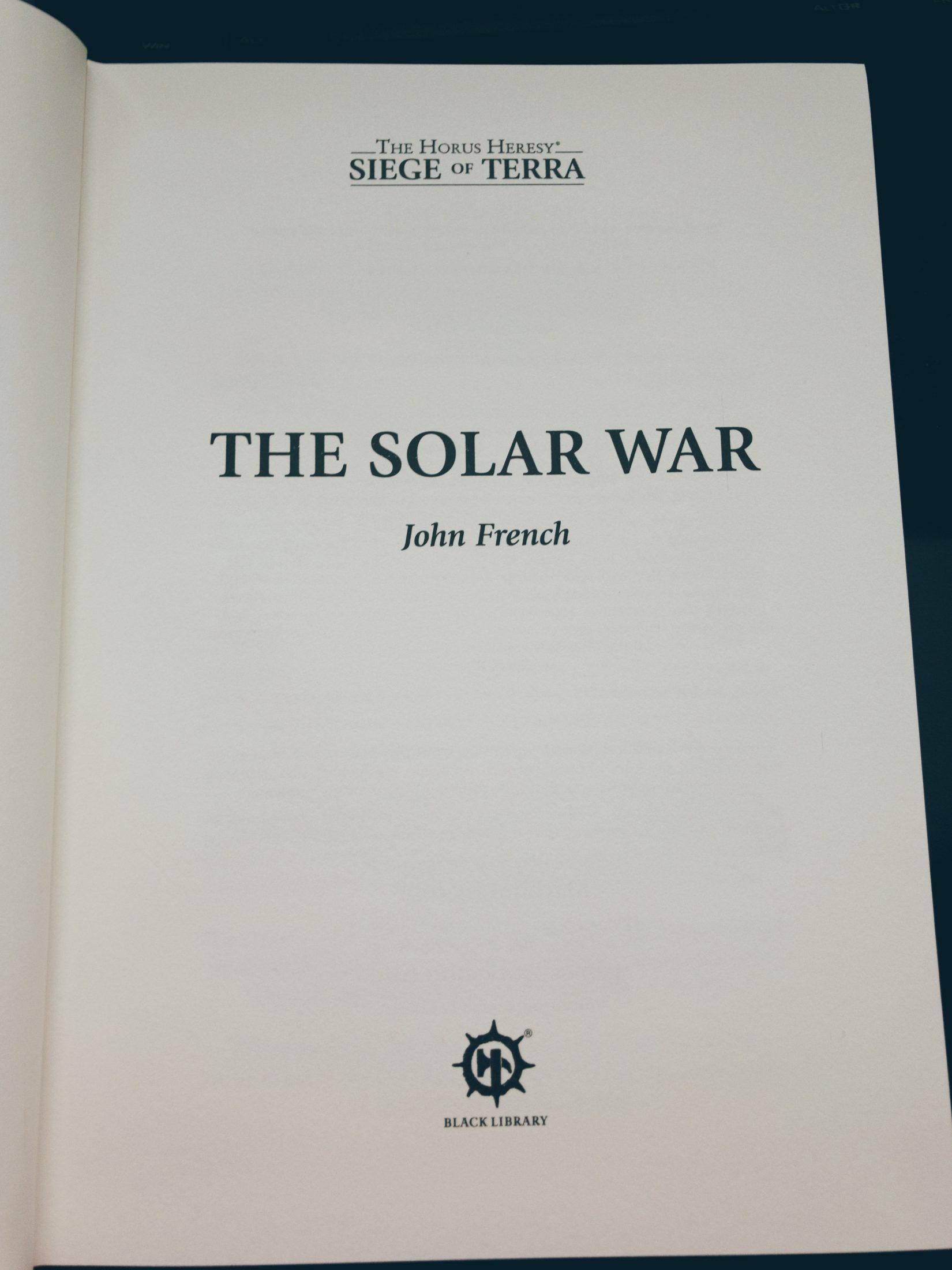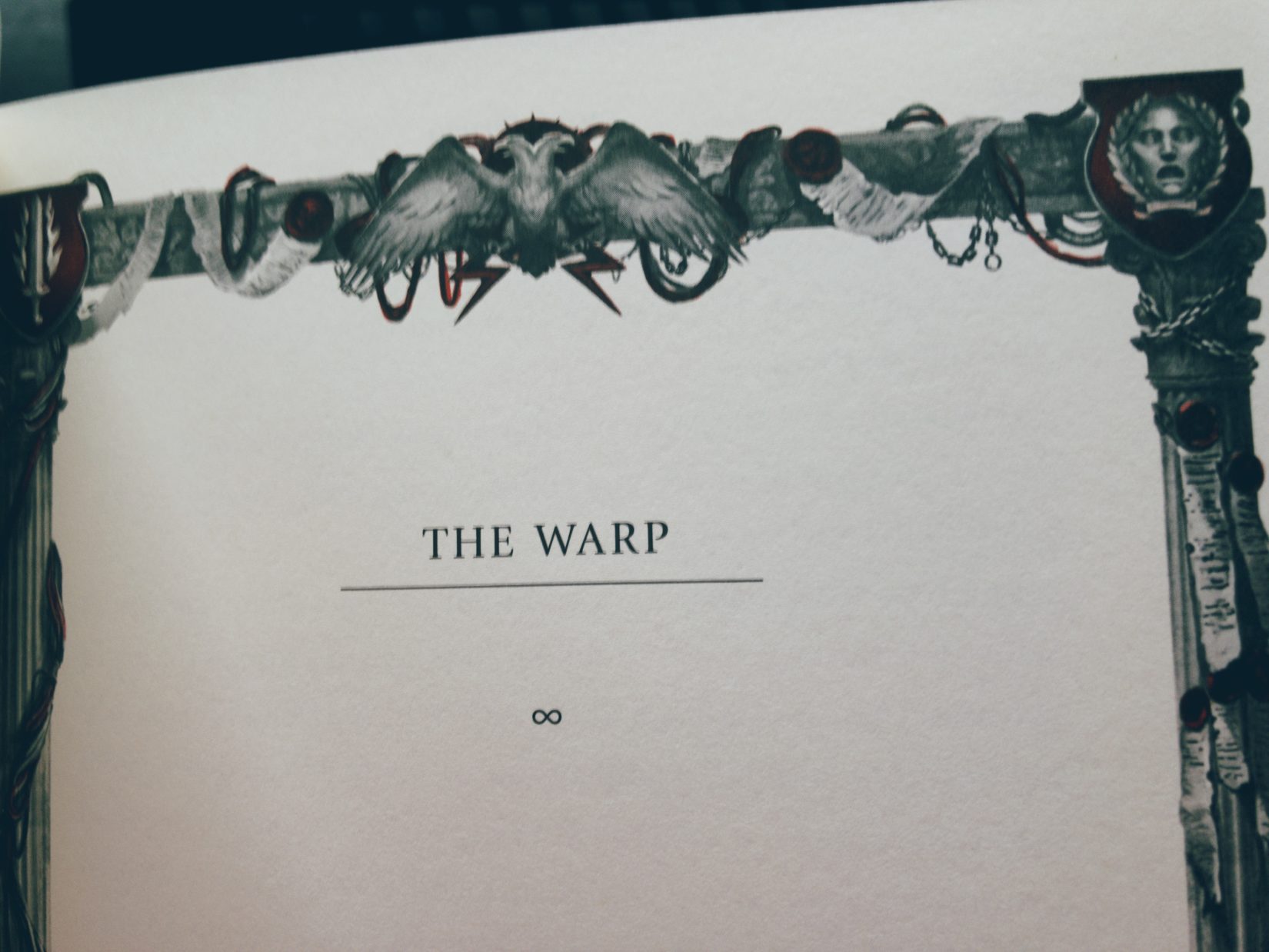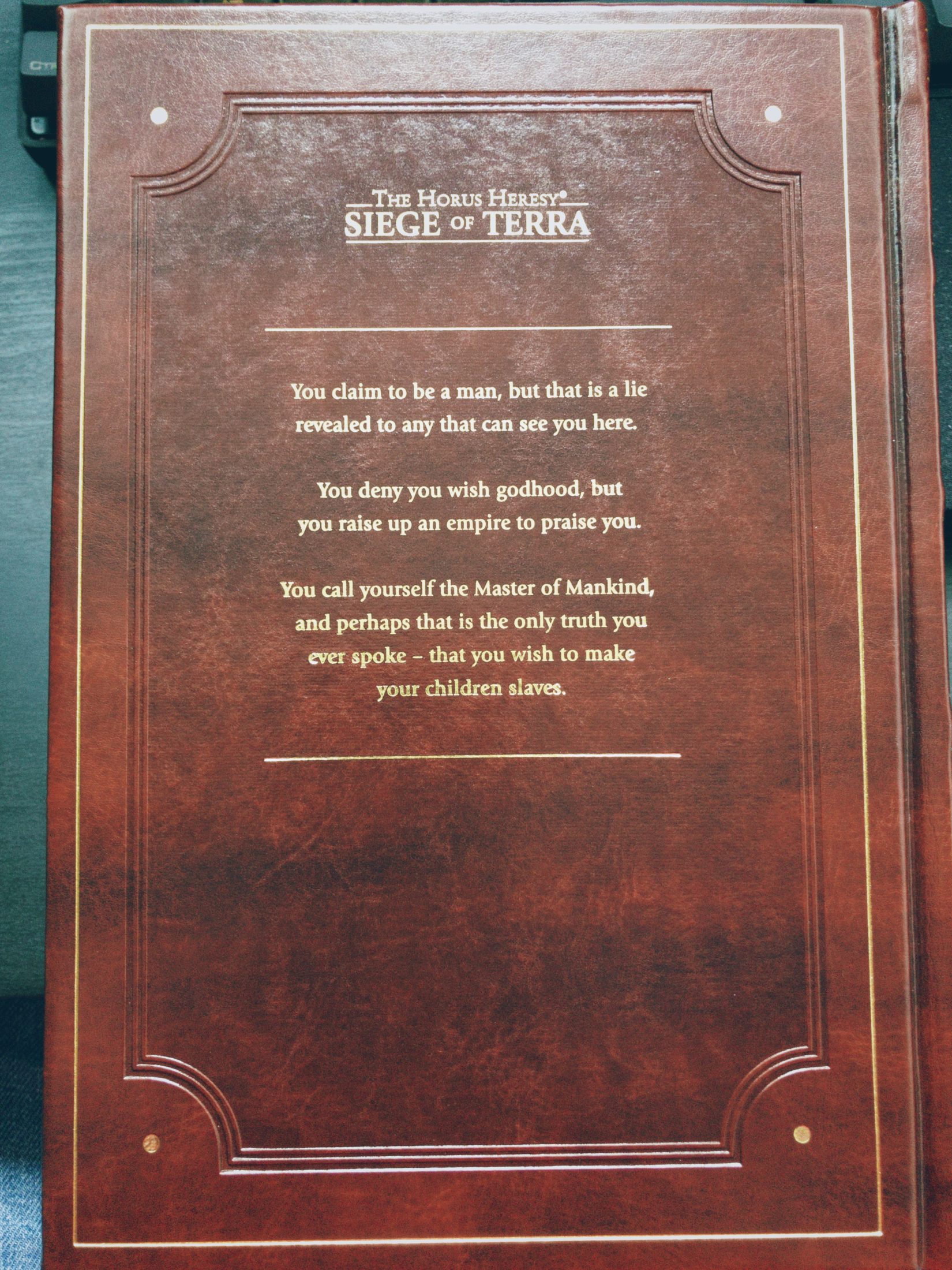The Lost and the Damned is the follow up to The Solar War, and second book in the eight-part The Siege of Terra series. The collector’s Edition is every bit as gorgeous as the first book. I can’t wait to get stuck in!

A new boxed game from Games Workshop, coming end of October/start of November, in the same style as Betrayal at Calth. New stuff includes plastic MKIII Marines, Tartaros-pattern Terminators, Legio Custodes, a couple of characters, and possibly more.
I’ve been looking forward to this release since I first heard about it back in March, so it’s great to finally get the confirmation it’s real.
If – like me – you were eying up the Volkite Weapon Kits from Forge World as a means of expanding the Betrayal At Calth box set, but we’re dismayed to find them sold out and “no longer available” (as opposed to “Temporarily out of stock”), then fear not!
Forge World have your back, according to a reply I got when I asked about the missing kits:
Not only will the weapons coming back in an improved form, but other kits will be getting a refresh, along with new accessory packs.
 Last weekend I read the latest Horus Heresy novel from Graham McNeill and Black Library: Angel Exterminatus. What follows is a quick review. I’m trying to avoid spoilers, so don’t go into much depth about the plot.
Last weekend I read the latest Horus Heresy novel from Graham McNeill and Black Library: Angel Exterminatus. What follows is a quick review. I’m trying to avoid spoilers, so don’t go into much depth about the plot.
Angel Exterminatus focusses on the the Iron Warriors legion and their Primarch, Perturabo. Although they are the main protagonists, the plot is setup and driven by another Primarch, Fulgrim, and the Emperor’s Children legion. Also making an appearance are 2 Eldar, and a few battered “loyalist” Space Marines.
Fans of Warhammer 40,000 – and the Horus Heresy in particular – will be lured into Angel Exterminatus by the promise of finding out more about Perturabo and the Iron Warriors. Up to now they have been typecast as rather mundane, if somewhat psychotic bullies. They’re the go-to guys when you have to besiege some fortress in a crawl-through-the-mud, ground-pounding war of attrition – as opposed to the other legions who grab all the glory for daring strikes into the heart of enemy territory. Beyond this stereotype their background hasn’t really been filled in much, leaving us thinking they’re pretty boring, bitter, and only concerned with blowing things up with the biggest gun possible.
What we learn from Angel Exterminatus is a very different picture. The Iron Warriors and Perturabo become interesting, multi-faceted characters. Perturabo is an master craftsman and artisan who can (and does) design and build devices and architecture of dazzling skill and intricacy. He has an unparalleled grasp of physics, mathematics, and strategy. He also has a volatile, murderous personality, but we come to understand where it comes from, and that he is very much more than he appears. The Iron Warriors largely reflect their Primarch. They are straight-forward warriors who excel at far more than they get credit for. They are logisticians, strategists… even geologists and engineers. They just happen to apply those skills to warfare and in a manner which is blunt and brutal, but extremely effective – applying the maximum force with the least amount of effort.
The overall plot can be summarised as: Fulgrim, with the aid of a mysterious Eldar “historian” convinces Perturabo to take his legion on an expedition to the heart of the Eye of Terror, to an ancient, dead Eldar world which is home to a mythical super-weapon which could end the war quickly in favour of Horus. Some Loyalist survivors of the opening battle of the Heresy discover the plan, and are led by another Eldar in a bid to thwart this possibility. Along the way we get to find out just how far the Emperor’s Children and Fulgrim have descended into excess and the worship of Slaanesh, and also how much it sucks to be a loyalist Space Marine right now. Mid-way through the book there’s even a Iron Warriors version of a game of Warhammer 40,000.
Overall, the plot flows nicely, and works well. There a very few, minor snooze moments, but nothing which totally detracts from the rest of the story. The payoff at the end gives us several things which old-timer fans might have been wondering when they would appear in the series, leaping some plot threads considerably.
In summary I’d say Angel Exterminatus is a great addition to the Horus Heresy series. If you’re a fan then you definitely want to pick it up. Newcomers might find it a bit difficult as it refers to a lot of threads in previous books, but it’s not so bad as I would say you should avoid it. It’s still a great read… One that once I started I didn’t put down until I’d devoured the whole book.
Foreword
If it wasn’t plainly apparent, I’m a big fan of the Warhammer 40,000 game and the surrounding universe. Warhammer 40K has some of the best “fluff” in science fiction. It is vast, covering everything from inter-personal conflict within the massive cities of the future, to vast inter-planetary war never-ending. To me, it’s not “just another” dystopian future, it’s the dystopian future. Mankind stands on the brink of an abyss; the only thing stopping it from plunging head-first into oblivion are the vast armies of the Imperium of Man, where death-in-service isn’t so much an occupational hazard, as expected. You will die for the Imperium, and you’ll bloody well be happy about it.
Life wasn’t always this bad for humanity though. 10,000 years earlier, the human race was at its peak, conquering vast numbers of worlds, rediscovering forgotten technologies, and generally unifying the galaxy under the banner of the Emperor. Religion is stamped-out, cast out by secular belief in science and reason (and large amounts of military force, if required). There are no Gods. Technology is a tool largely viewed with distrust and suspicion. Leading the charge of expansion throughout the galaxy are the genetically engineered legions of the Space Marines, led by their demigod-like Primarchs – the “sons” of the Emperor, created using arcane science to lead humanity into a better future.
Chief among the Primarchs is Horus, and the Horus Heresy series of novels from Black Library tell the story of what happened when he fell to corruption and turned against the Imperium1.
WARNING Mild spoilers from now on.
Fear to Tread.
It’s against this background we have Fear to Tread.
Fear to Tread, by James Swallow, is the 18th(!) novel in the series, and the first to exclusively focus on the Space Marines of the Blood Angels legion. Other legions show up, but mostly just as plot devices. I’ll talk a bit more about that later. James Swallow has written most of Black Library’s other Blood Angels books, which try as I might, I just could not get in to. This left me a little unsettled coming in to Fear to Tread. The Blood Angels are one of – if not my most – favourite Space Marine “Chapters”2. How much? If I couldn’t finish any of the other Blood Angels novels by the same author, was I be disappointed by Fear to Tread? Find out at the end of this review.
Plot Summary
The basic plot of Fear to Tread is: Sanguinius, the angelic Primarch (no, seriously; he has wings, and he glows) of the Blood Angels, undertakes a mission given to him by his most-trusted and beloved brother Horus – not knowing that Horus has turned traitor. The mission is – of course – a trap to destroy the Blood Angels. Remember I said there were no Gods? Unfortunately that was a lie, and a secret the Emperor has kept from everybody. There are four malevolent Gods who are behind Horus’ corruption, and they’re pissed at humanity. When the Blood Angels reach the planets they’ve been sent to they don’t meet the aliens they were expecting, but the previously unknown, supernatural horror of daemons. Along the way we discover the dark secret about the Blood Angels which Sanguinius has hidden from his legion and everybody else. This secret threatens to destroy the Blood Angels and turn them into a parody of all they stand for.
Context within the Series
One of the first things to strike me about Fear to Tread was how much it references other books in the series, and even a limited edition novella which released a couple of years ago. I found this a mixed blessing.
On the one hand, it was great to see how the events in the other books are having an effect in the wider story arc. On the other, it makes Fear to Tread harder for a new-comer to just dive right in. The best example of this is the important character of Apothecary Meros. If you haven’t read The Book of Blood novella you’ll have no idea what it means to when the story mentions his time in a sarcophagus, the visions he had, or the warnings he received about Horus and the future. It’s glossed over very quickly, and is quite confusing out of context. At least with the Space Wolves we get an explanation for their presence which makes sense even if you haven’t read A Thousand Sons or Prospero Burns. Overall though, I’d say this is a relatively minor nitpick.
The Players, and Characterisation
Horus Heresy books have a lot of characters in them, including several recurring characters. If you thought the A Song of Ice and Fire series by George R.R. Martin was character heavy, you haven’t seen anything yet. Partly this is due to vast scope of the universe WH40K, and partly because of the scale of the armies and worlds involved. Fear to Tread is probably one of the “lighter” books in this regard, with only a handful main characters to keep track of.
By and large, these characters work very well, each fulfilling a purpose, and each depicting a facet of the Blood Angels “persona” fans have come to know over the years. If anything, the Blood Angels of Fear to Tread are a little more “fun” than those we see in later stories (later in the 40K timeline, that is). These Blood Angels aren’t so much the “emo vampires in space” stereotype I’ve seen other reviewers mention when introducing Fear to Tread. They’re a brotherhood who will bend the rules sometimes for each other, when they feel it is the right thing to do; they’re noble and heroic, willing to risk their lives for just a handful of trapped survivors; on the flip-side, they are absolutely Angels of Wrath, capable of such extreme violence it even makes the “barbarian” Space Wolves take pause3.
Sanguinius would be a hard, complicated character for any writer to handle well (and still made likeable), yet James Swallow manages to make him relatable; flawed, but not overly so, and I found myself sympathising with the choices forced upon him during the course of the story. Not easy when the character is a 12-foot tall angel-winged super-human!
While I feel the “Good Guys” are well-rounded and relatable characters, I wasn’t so much of a fan of the villains of the story, apart from the daemon Ka’Bandha. For being a being of pure hate and violence, Ka’Bandha is actually pretty well laid out, and not the one-dimensional caricature he could have been. His scenes with Sanguinius are key moments of the book. The remaining villains are generally a bit uninteresting unfortunately.
Horus’ depiction (in the few times we see him – I don’t count him in the villains group because he’s only seen a few times) in Fear to Tread was somewhat new. Up to now, Horus has retained a bit of “tortured nobility” in his character, like he regrets the path he has started down. Here we get to see just how much of an inferiority complex he has comparing himself to Sanguinius, and more and more of the cruel, evil, twisted creature he will become. In contrast to this, the flashback scenes to times before the Heresy are quite poignant, particularly the scene after Horus is given control over all the crusading expedition fleets.
What I Liked
The building sense of dread as the Blood Angels fleet moves further into the planetary system, and encountering more and more things which just do not make any sense to them works well. You really get the feeling this is nothing they have ever faced before, and for the first time they are unsure how to meet their foe. They are uncomfortable and out of their element. Nerves begin to fray, and distrust starts to seep in. The tension does genuinely mount as you wonder just what horror will they come across next?
Swallow seems to have a knack for scene building. Every place and character within gets described in just enough detail as to allow us to picture it vividly, but not so much the story drags, weighed down by too much information.
Character interactions feel natural, and their personalities play off each other in a way I could believe in. No part of the dialog felt forced, or overwrought – not something I could say about some of the other books in the series.
It wouldn’t be a Warhammer 40,000 book without big climactic battles, and Fear to Tread does not disappoint. From the prologue to the conclusion, every battle is well written, with a good blend of pace, scale, drama, and grit. Even the smaller fire-fights – perhaps especially the smaller ones – are quite gripping to read. There were times I genuinely didn’t expect some characters to make it out alive. The confrontation between Ka’Bandha and Sanguinius (as depicted in the cover art) is particularly enjoyable, and lived up to expectations.
What I Didn’t Like/Understand
The big thing which did not sit well with me was the end of the book, when the Blood Angels end up in the Ultima Segmentum instead of at Earth, meeting Roboute Guilliman and the Ultramarines legion. I can understand how it happened from a in-world mechanics viewpoint, but I don’t get why it happened, knowing how the wider story plays out. The Blood Angels end up at Earth in time for the last battle with Horus (with Sanguinius playing a very, very, important role in that), but the Ultramarines do not. They get trapped in their far corner of the Imperium, as Warp travel becomes almost impossible. As a result the Ultramarines largely escape the Horus Heresy intact (aside from the events in Know No Fear) and lead the rebuilding after the war. So it made no sense to me to have the Blood Angels end up where they did. I can only surmise there is another book imminent which will directly follow on from the end of Fear to Tread. Unless it has a very good explanation or way to resolve this, then it just doesn’t make sense.
The Word Bearers Space Marines were pretty much unnecessary to the plot. Apart from acting as messengers, they didn’t do anything of note. We get to see one of them pining to “ascend” by joining with a daemon, but otherwise they were replaceable with some sort of “macguffin” which could have fulfilled their messenger role, and cut down the character count. In the end they come off as unnecessary and incompetent evil henchmen with delusions of grandeur.
The Space Wolves are slightly better used than the Word Bearers in that they are able to relay important information of what’s been happening outside the confines of this novel. Beyond that though, again, they don’t do much. Their plot is “hang around Sanguinius ‘suspiciously’, later give him some important information, then get butchered in a horrible fashion unbefitting their character.”
A few too many loose ends are left dangling for my liking. I’m avoiding being too spoilery, so I’m not going to say more, but (along with the above quibble with the ending) it feels like this is a “part one-of-two” story within the series.
Conclusion
It might seem from the above I have more negative things overall to say about Fear to Tread than positive. That’s absolutely not the case. Fear to Tread continues the recent trend of the Horus Heresy series getting back on track after a few fairly lacklustre books. As part of the series it is excellent instalment, and as a fan I thoroughly enjoyed the Blood Angels portrayal. The characterisation is largely top-notch, and the pacing pretty good. The bread-and-butter of Warhammer 40,000 fiction are the battles and conflicts, and Fear to Tread handles these very well, highlighting the unique ways the Blood Angels fight compared to the other Space Marine legions. There are a couple of key battles which had me gripped, frantically reading the pages to see what happened next.
Where I think Fear to Tread falls down, is reliance of other books to fill in the gaps. Compared against Know No Fear – the other recent high-watermark in the series – Fear to Tread is harder to understand out of context. This could be off-putting to the casual reader who has no earlier exposure to the series. I shan’t too hard on Fear to Tread because of this… it’s always a fine line between advancing the overall plot and making it accessible to newcomers, within such a long-running series.
If I must give Fear to Tread a rating, I’d give it a solid 4 out of 5. But more importantly for me it’s good enough it’s given me a determination to finish the other Blood Angel books Swallow has written.
And maybe start a new Blood Angels army. Again.
- As a personal side note: before this series, the Heresy was an unexplored but important part of the background of the Warhammer 40,000 setting, so it’s great to we’re finally getting to read about it. ↩
- After the events of the Horus Heresy, the vast Space Marine legions get split into much, much, smaller organisational units, called “Chapters”. So Legion = Pre-Heresy Space Marines, Chapter = Post-Heresy Space Marines. ↩
- The scene where the Space Wolves realise the levels of violence the Blood Angels have in their nature, buried underneath such a calm and noble exterior, is one of may favourite passages in the book. ↩
